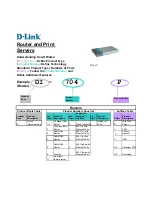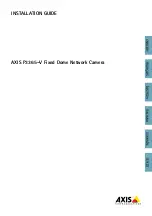
Bridge GUI Guide: Introduction
9
In addition to the RFC-4193 IPv6 address FP Mesh
automatically generates, the MBG is provided with a global
prefix by the network IPv6 router. If a DHCP server internal to
one of the MPs is enabled, each IPv6 node in the network can
then be reached by the public address so provided.
NOTE:
There is no
coordination be-
tween FP Mesh MBGs.
You can attach an FP Mesh network to a hierarchical network
by more than one MBG to provide path redundancy between
the mesh and the LAN or WAN. If one of the MBGs becomes
unavailable, the other(s) will maintain the connection.
Regardless of the number of MBGs attached to the hierarchical
network, traffic into the FP Mesh network typically flows
through only one MBG. If two (or more) MBGs are used, you
can manually split traffic between the two MBGs by IPv4
address ranges (10.1/16
->
MBG1, 10.2/16
->
MBG2, for
example), but it will still be the case that only one MBG will
send traffic to any given FP Mesh node.
1.4.1.3
Separating and Rejoining in FastPath Mesh Networks
Mesh Points in a wireless FastPath Mesh network can
separate and rejoin smoothly, individually or in groups, as
mobile Mesh Points move in and out of range of each other.
Changes in the costs and availability of FP Mesh data paths
are propagated throughout the network.
Figure 1.3. Single Separated FP Mesh Network
When a split forms in a mobile FP Mesh network attached to a
hierarchical network, as shown in Figure 1.3, any nodes
03
03
03
03
03
03
/$1
MBG
03
03 0HVK3RLQW
MBG
0HVK%RUGHU*DWHZD\
0HVK&RUH&RQQHFWLRQ
0HVKļ+LHUDUFKLFDO&RQQHFWLRQ
$FFHVV,QWHUIDFH
03
03
















































